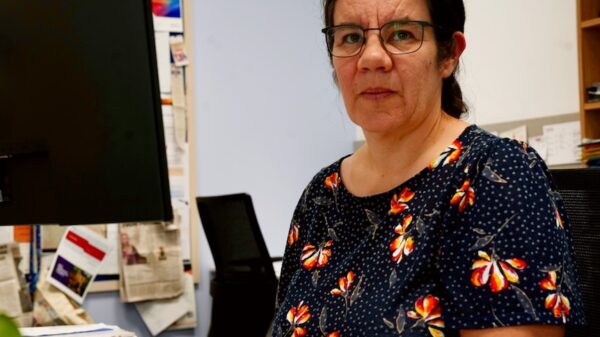A team of researchers at the University of Michigan has made significant strides in developing a technology that utilizes plasma to effectively eliminate PFAS contaminants from drinking water. Their findings, published on November 10, 2025, in the journal Plasma Sources Science and Technology, reveal how self-organizing plasma patterns can enhance water treatment processes.
The research highlights that by increasing the contact surface area between plasma and water, it is possible to scale up the destruction of various contaminants, including PFAS, detergents, and microbial agents. When plasma interacts with water, it generates complex patterns that resemble stars or gears, significantly expanding the area through which contaminants can be treated.
Understanding Plasma Dynamics
The physics behind the self-organization of plasma is complex. Nonetheless, the research team successfully captured images depicting the water surface beneath the plasma. These images showed that the plasma creates an electrical force that distorts the water’s surface, generating waves that can be manipulated to increase the effectiveness of water treatment. The shape and size of these waves depend on factors such as the heating rate of the gas and the electrical properties of the water.
John Foster, a professor of nuclear engineering and radiological sciences at the University of Michigan, emphasized the potential of this technology, stating, “Laboratory demonstrations show cold plasma can get rid of a lot of contaminants in water, removing them almost completely. It opens up a new opportunity to treat these legacy chemicals.”
PFAS, often referred to as ‘forever chemicals’ due to their resistance to degradation, are prevalent in numerous products, including fire-fighting foams and non-stick cookware. These compounds can seep into groundwater and accumulate in the human body, posing serious health risks, including cancer and endocrine disruption.
Mechanism of Plasma Treatment
The innovative approach involves generating cold plasma at atmospheric pressure, which consists of energetic electrons, ions, and excited molecules. When this plasma comes into contact with water, it produces ions, solvated electrons, and UV light, effectively breaking the strong carbon-fluorine bonds characteristic of PFAS. Traditional water treatment methods are unable to destroy these compounds, making the development of advanced solutions crucial.
Despite the promising results, the plasma injection process is energy-intensive and costly, posing challenges for industrial applications. Researchers are now focusing on refining the techniques to enhance efficiency and reduce costs.
Exploring Self-Organizing Patterns
The study also delves into the unique phenomenon of entropy-reversing patterns formed by plasma. Instead of dissipating, these plasma patterns become increasingly complex, allowing for greater contact with the water surface. Zimu Yang, a doctoral graduate involved in the research, noted the discovery of textured water surfaces under plasma, which appeared during the experiments.
The researchers employed a specialized, high-speed camera setup to observe the interactions between plasma and water in real-time. This setup enabled them to capture the moment of surface perturbation and confirm that the plasma is responsible for the water’s deformation, not the other way around.
Future Implications
The findings suggest that by manipulating the self-organizing plasma patterns, it may be possible to treat larger volumes of water more effectively. As the team continues to investigate these interactions, they envision integrating this technology into existing water treatment systems, ultimately providing a sustainable solution for eliminating PFAS and other contaminants.
The research underscores the ongoing efforts to combat environmental pollution through innovative scientific approaches. The implications of successfully scaling up this technology could lead to significant advancements in public health and environmental safety.


































































